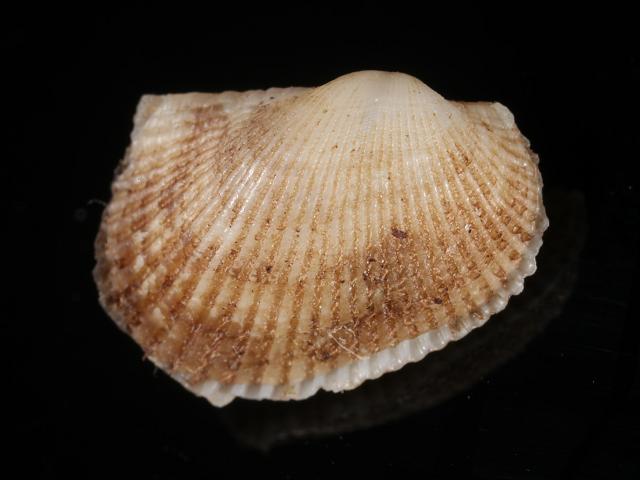
APHOTOMARINE
An educational resource dedicated mainly to the photography
and diversity of marine life that can be found in coastal waters
and intertidal areas of Great Britain and Ireland by David Fenwick.

Anadara transversa (Say, 1822) - Transverse ark (Marine bivalve images)
Scroll down and rollover titles to change screen image or click on title to view image.
Transverse ark
Anadara transversa
- shell with overlapping valve 1
Anadara transversa
- shell with overlapping valve 1
Transverse ark
Anadara transversa
- exterior shell valve 1
Transverse ark
Anadara transversa
- with 0.1mm division rule 1
Transverse ark
Anadara transversa
- internal shell valves 1
Transverse ark
Anadara transversa
- hinge and teeth 1
Transverse ark
Anadara transversa
- beaks and hinge 1
An 8mm long juvenile specimen of Anadara transversa was found with seven specimens of Argopecten gibbus, the Atlantic calico scallop, inside a small, plastic, toy speedboat that had washed ashore in Ireland. Specimens were found by Liam Mac Namara at Fanore Beach, Co Clare, Ireland, 18.07.16. It is likely the toy boat was lost or lauched in Florida, USA.
Transverse ark
Anadara transversa
- shell 1
Transverse ark
Anadara transversa
- shell 2
Transverse ark
Anadara transversa
- shell edge 1
Specimen above was purchased as a reference specimen as the species is potentially a rafting species and may arrive in the UK on flotsam from the Gulf of Mexico and the SE coast of the United States of America. The specimen is in a private collection in Cornwall and was purchased for displaying this non-native species here. Images taken 15.01.16.
The specimen above was found after a storm by Steve Rosenthal, on Turner Beach, Captiva, Florida, USA. 04.12.2009. The shell typically has one valve larger than the other.

The main objective of this website is in furthering environmental awareness and education through the medium of photography. To increase awareness and access to the wildlife of the region and help
people find and identify it. Sometimes the difference between species is obvious but many species can only be determined by observing microscopic characteristics that are specific to any one species.